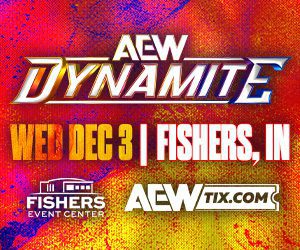Many Pacers fans under 40 have no recollection of the American Basketball Association. They look at those championship banners in Bankers Life Fieldhouse as relics and never give them a second thought, and depending on your basketball pedigree, that’s either no big deal or it’s downright sacrilegious. Count me in as the latter of the two, and I recently read a great book about that era of Pacers basketball that gave even a hardcore ABA fan like myself an education of sorts and beyond.
“Reborn” by Mark Montieth captures both the excitement of the ABA era for the team and offers a look at how the franchise began, the efforts it took to keep it in place and make it a viable entity that evolved into an NBA franchise. Many of you undoubtedly recognize his name as the long-time, award-winning Pacers beat writer for the Indianapolis Star, but he’s also an accomplished author and currently offers his vast NBA perspective on Pacers.com. He took some time recently, in a rather interesting conversation, to talk with me about his book and what went in to it.
Indianapolis Recorder: When did you begin following the Pacers and how long did you research matters for the book?
Montieth: I was just twelve years old when the Pacers began play and I attended games that season. I remember the games against the Oakland Oaks and getting an autograph from the great Rick Barry. I still have that autograph! I went to games and bought cheap seats and tried to move down. I also bought standing room only seats during the playoffs. The research for the book actually began in the early 90’s as I was working for the Indianapolis Star. I worked on it throughout the following years and began concentrating on it more when I left the Star in 2008.
In the book you chronicled how many African-American players experienced discrimination when they sought housing in the Indianapolis area. Can you elaborate on what occurred and who assisted the players?
While it may surprise some younger people that Black people could be denied housing here in the late ‘60s, it did indeed occur. The players could afford to live in decent apartment complexes, but many were told none were available when they applied, even in newly constructed developments.
Pacers officials made phone calls to various apartments on the behalf of players to assist them, and some players purchased homes in Black neighborhoods. One player, Bobby Joe Edmonds, resorted to living with his parents at first.
You wrote that the unconscionable behavior of some Indianapolis residents wasn’t limited to housing. What examples did you uncover in writing this book?
Larry Staverman, the original head coach of the Pacers told me he would get catcalls at games when he opted to have five Black players on the floor at once. The team had seven Black players on the roster, which at the time was the more than any pro team in the country.
Bobby Leonard today is known to a younger generation as the beloved color analyst on Pacers radio broadcasts, but his coaching career with the Pacers, especially in the formative ABA years, was crucial to their success in winning three ABA championships. Can you talk a bit about the bond between him and his players?
The bond really developed in the latter seasons, but I think the book shows Leonard’s leadership skills. He knew when to go after a player and when to put his arm around him as well, and he certainly established a new culture. The Pacers were 2-7 when he took over for Staverman, and he led the team to the ABA finals in 1969.
Finally, you cover one of the most interesting, yet enigmatic Pacers of the ABA in Reggie Harding. He was an immensely talented player, but his career was tragically shortened by personal demons. What were your thoughts on him as you learned more about him through your research for the book?
Reggie Harding would make a great 30 for 30 documentary if there were enough people alive who knew him. He could have been a Hall of Famer had he been able to keep his act together. At one time, he even dominated the great Mel Daniels in a game. He came from an impoverished background and he never knew his biological father. His mother was incapable of caring for him and he was adopted by parents who couldn’t control him. He was someone who treated fans well and his teammates liked him. He was just way too irresponsible.
You can find a copy of “Reborn” at Barnes and Noble bookstores in the Indianapolis metropolitan area, and you can hear the author on an upcoming segment of Inside Indiana Business with Gerry Dick on WTHR. Want to meet Mark Montieth? He will be available for a book signing from noon to 4 p.m. April 7 at Books-A-Million, 5750 W. 86th St.
Danny Bridges, who feels “Reborn” is a must read for any true Pacers fan, can be reached at (317) 370-8447 or at Bridgeshd@aol.com




